#Amegilla cingulata
Explore tagged Tumblr posts
Text
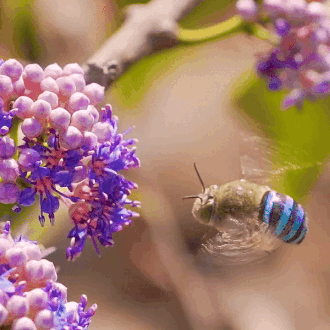
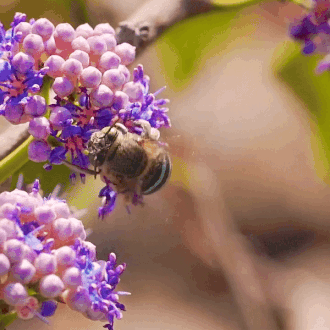

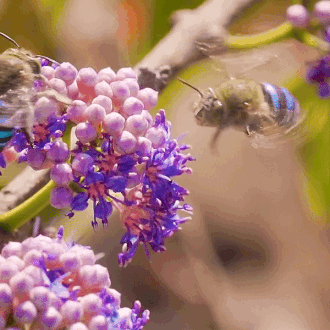
vishalvjadhav on ig
#stim#bees#insects#nature#sfw#purple#blue#black#brown#green#bugs#wings#animals#flowers#plants#blue banded bee#amegilla cingulata#ishy gifs#postish
1K notes
·
View notes
Text
An Eye For Colour

An Australian Blue-banded Bee (Amegilla cingulata) gets attracted to a Singapore Rhododentron (Melastoma malabathricum) after the rain on the grounds of the Bird Paradise. Photo credit: Eleanor Chua.
#photographers on tumblr#Amegilla cingulata#blue-banded bee#canon eos rp#canon photography#flora fauna#flora photography#insect pics#Melastoma malabathricum#Singapore rhododendron#tamron 16-300mm
21 notes
·
View notes
Text
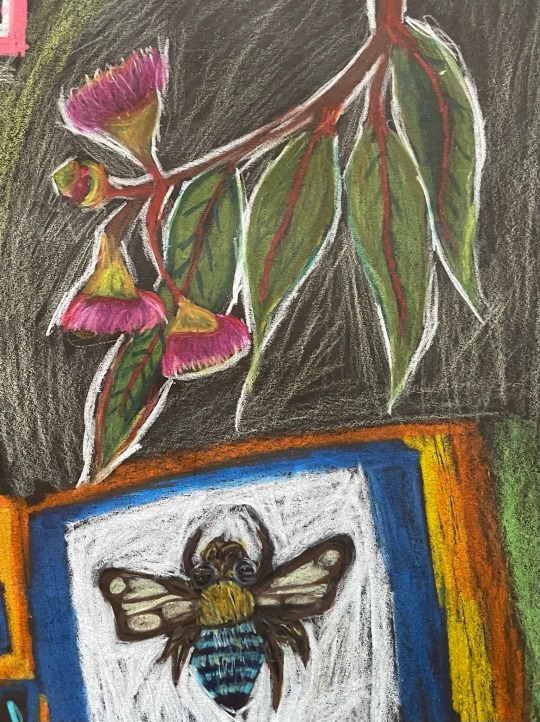
A lil native bee sketch!
This is the Blue Banded Bee!
Or Amegilla cingulata.
They’re found throughout mainland Australia!
We’ve been learning about eucalyptus trees in class so I thought I’d draw some gumnut blossoms!
8 notes
·
View notes
Text
"As solar panels heat up beyond 25°C, their efficiency decreases markedly. Green roofs moderate rooftop temperatures. So we wanted to find out: could green roofs help with the problem of heat reducing the output of solar panels?
Our research compared a “biosolar” green roof — one that combines a solar system with a green roof — and a comparable conventional roof with an equivalent solar system. We measured the impacts on biodiversity and solar output, as well as how the plants coped with having panels installed above them.
The green roof supported much more biodiversity, as one might expect. By reducing average maximum temperatures by about 8°C, it increased solar generation by as much as 107% during peak periods. And while some plant species outperformed others, the vegetation flourished.
These results show we don’t have to choose between a green roof or a solar roof: we can combine the two and reap double the rewards...
How did the panels affect the plants?
In the open areas, we observed minimal changes in the vegetation cover over the study period compared to the initial planted community.
Plant growth was fastest and healthiest in the areas immediately around the solar panels. Several species doubled in coverage. We selected fast-growing vegetation for this section to achieve full coverage of the green roof beds as soon as possible.
The vegetation changed the most in the areas directly below and surrounding the solar panels. The Baby Sun Rose, Aptenia cordifolia, emerged as the dominant plant. It occupied most of the space beneath and surrounding the solar panels, despite having been planted in relatively low densities.
This was surprising: it was not expected the plants would prefer the shaded areas under the panels to the open areas. This shows that shading by solar panels will not prevent the growth of full and healthy roof gardens.
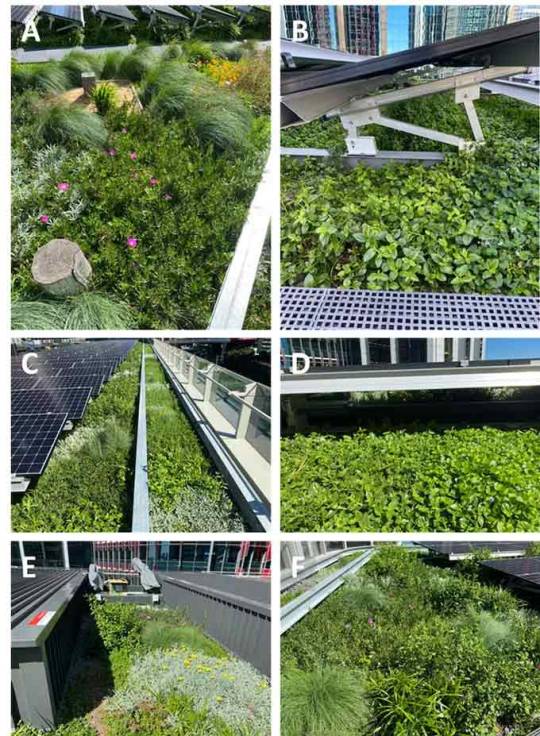
What were the biodiversity impacts?
We used environmental DNA (eDNA) surveys to compare biodiversity on the green roof and conventional roof. Water run-off samples were collected from both roofs and processed on site using portable citizen scientist eDNA sampling equipment to detect traces of DNA shed by the species on the roof.
The eDNA surveys detected a diverse range of species. These included some species (such as algae and fungi) that are not easily detected using other survey methods. The results confirmed the presence of bird species recorded by the cameras but also showed other visiting bird species went undetected by the cameras.
Overall, the green roof supported four times as many species of birds, over seven times as many arthropods such as insects, spiders and millipedes, and twice as many snail and slug species as the conventional roof. There was many times the diversity of microorganisms such as algae and fungi.
Encouragingly, the green roof attracted species unexpected in the city. They included blue-banded bees (Amegilla cingulata) and metallic shield bugs (Scutiphora pedicellata).
How did the green roof alter temperatures?
The green roof reduced surface temperatures by up to 9.63°C for the solar panels and 6.93°C for the roof surfaces. An 8°C reduction in average peak temperature on the green roof would result in substantial heating and cooling energy savings inside the building.
This lowering of temperatures increased the maximum output of the solar panels by 21-107%, depending on the month. Performance modelling indicates an extensive green roof in central Sydney can, on average, produce 4.5% more electricity at any given light level.
These results show we don’t have to choose between a green roof or a solar roof. We can combine them to take advantage of the many benefits of biosolar green roofs.
Biosolar roofs can help get cities to net zero
The next step is to design green roofs and their plantings specifically to enhance biodiversity. Green roofs and other green infrastructure may alter urban wildlife’s activities and could eventually attract non-urban species.
Our green roof also decreased stormwater runoff, removed a range of run-off pollutants and insulated the building from extremes of temperature. A relatively inexpensive system provides all of these services with moderate maintenance and, best of all, zero energy inputs.
Clearly, biosolar green roofs could make major contributions to net-zero cities. And all that’s needed is space that currently has no other use."
-via GoodGoodGood, May 12, 2024
#green#green roof#biosolar#solar power#solar panels#rooftop solar#solarpunk#native plants#australia#sydney australia#biodiversity#conservation#climate change#climate action#climate hope#global warming#temperature#climate adaptation#cooling#good news#hope
2K notes
·
View notes
Note
Do you have any cool facts about the Blue Banded Bees?
Blue-banded Bees:
BBBs are a few species in the genus Amegilla, which are also known as the "digger bees". As the name would suggest, they dig burrows into the ground, where they lay their eggs. The live in Australia, South and SE Asia, and parts of Oceania.
They often engages in buzz pollination.

Australian Banded-Digger (Amegilla cingulata), family Apidae, QLD, Australia
photograph by Jane C. Frost


Northern Blue-banded Bee (Amegilla walkeri), family Apidae, NW Australia
Photograph by Nick Volpe
598 notes
·
View notes
Text
There is more than one kind of blue banded bee. This is an Amegilla cingulata (Autralian blue banded bee)
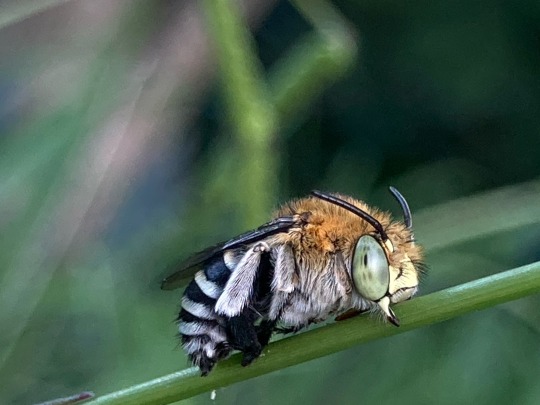
incredible little blue-banded bee who's latched onto a grass stem to go to bed for the night!!!!!! i've never seen these guys not on the pollination grind so it's great to see an eepy guy
113 notes
·
View notes
Photo

🔥 Male Blue Banded bees (Amegilla cingulata)
0 notes
Photo
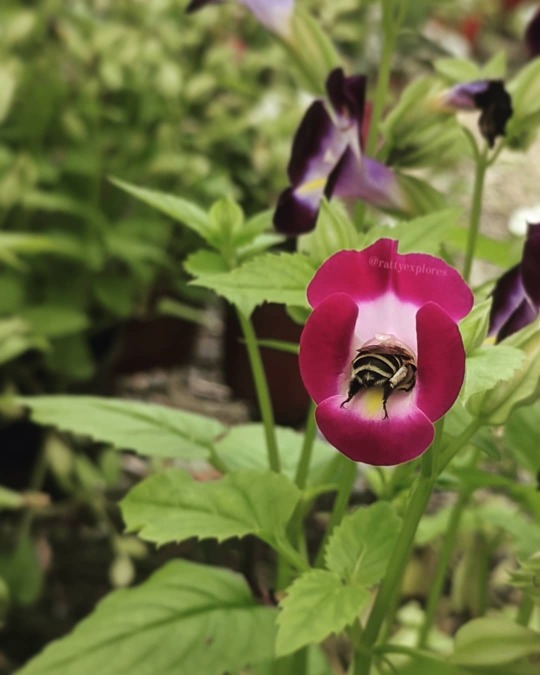
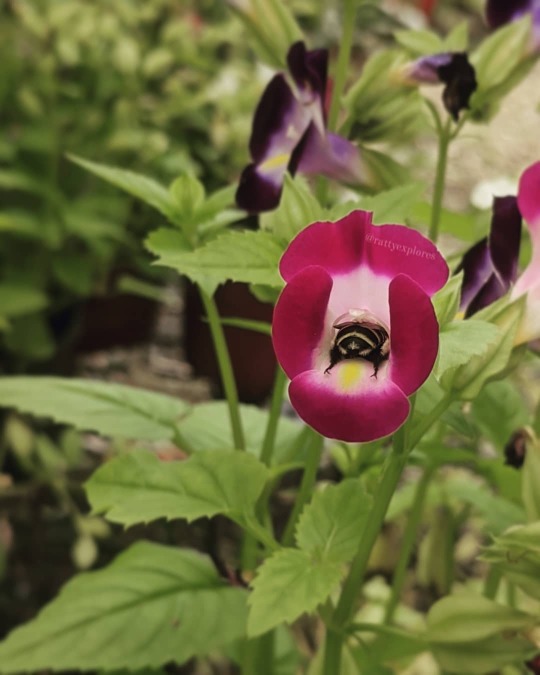
A very busy bee in deed.
{ Amegilla cingulata }
#Amegilla cingulata#Apoidea#hymenoptera#Anthophoridae#blue banded bee#bee#beeblr#bees#bugblr#bugs#bug#cute#kawaii#adorable#bugs tw#insect#insects#insectblr#insects tw#insecta#photography#arthropods#arthropoda
343 notes
·
View notes
Text
Benzersiz Mavi Şeritli Arı
Benzersiz Mavi Şeritli Arı
Bilimsel adı “Amegilla Cingulata” olan mavi şeritli arı diğer pek çok arı türünün aksine yalnız bir hayat yaşıyor ve bal üretmiyor. Mavi Şeritli Arı, Avustralya kıtasının Tazmanya dışındaki tüm eyaletlerinde gözlemlenebilen endemik bir tür. Bu arılar, karınlarının etrafındaki mavi renkli çizgilerle tanınıyorlar. Saldırgan bir tür olmayan bu arılar, beslenmek için tıpkı bal arıları gibi muhtelif…
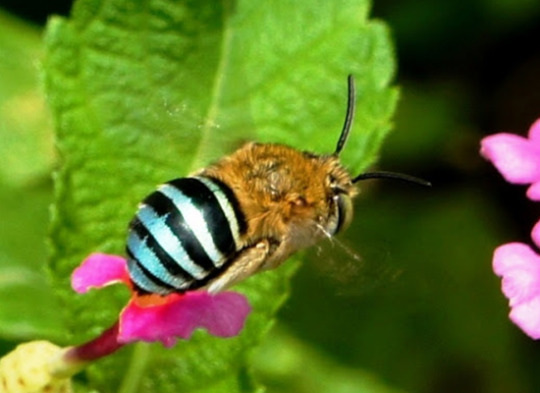
View On WordPress
#Amegilla Cingulata#Benzersiz Endemik Mavi Şeritli Arı#garip#ilginç#lavanta#sıra dışı#tazmanya#tozlaşma
1 note
·
View note
Text
As abelhas-azuis
Conhecidas internacionalmente como “Blue Banded Bee”, as abelhas-azuis (Amegilla cingulata) são animais endêmicos da Austrália que chamam a atenção por conta da cor azul no abdômen, também podem ser encontradas em toda a região entre a Ásia e o Pacífico. Outra marca na espécie é que em seu abdômen os machos têm cinco faixas completas, enquanto as fêmeas têm quatro. topbiologia
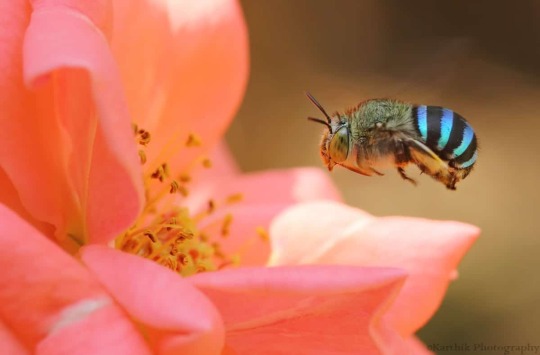
Blue calamintha…
View On WordPress
#abelhas-azuis#Alsácia#Amegilla cingulata#Australian Geographic#Austrália#Ásia#Bec Crew#Blue Banded Bee”#M&Ms#Museu de História Natural da Flórida#Ribeauville
0 notes
Text
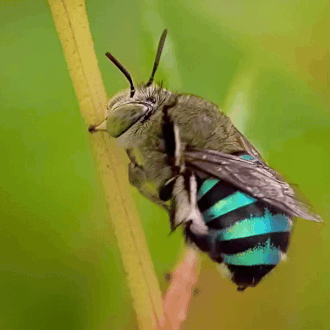

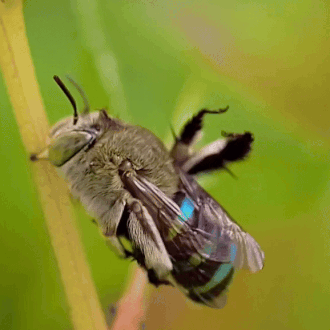
a blue-banded bee's before bed evening ritual | vishalvjadhav on ig
#stim#bees#animals#bugs#sfw#blue#teal#black#brown#green#nature#insects#blue-banded bee#amegilla cingulata#wings#shiny#ishy gifs#postish
1K notes
·
View notes
Photo
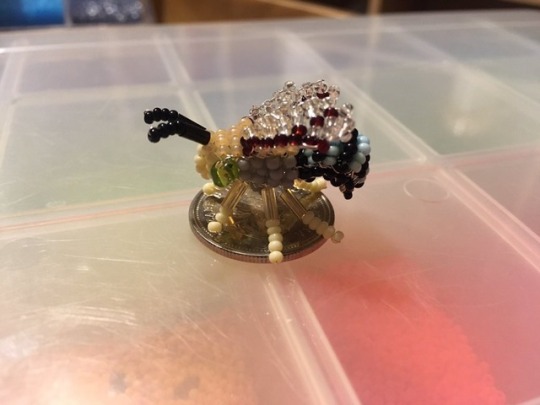


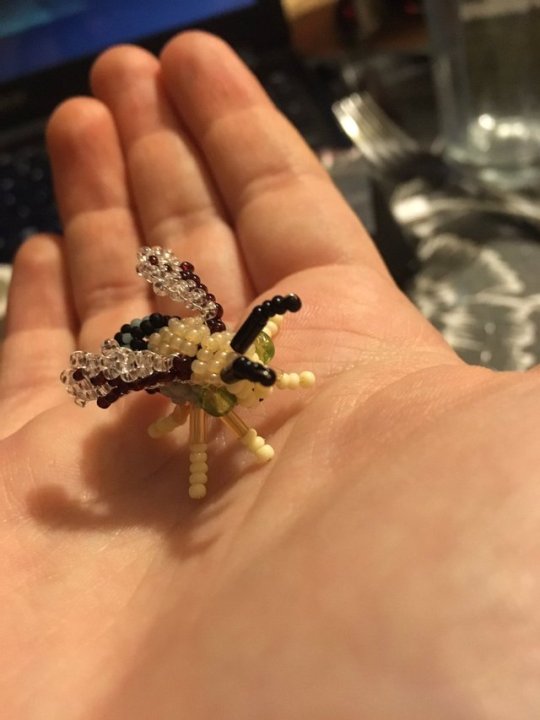
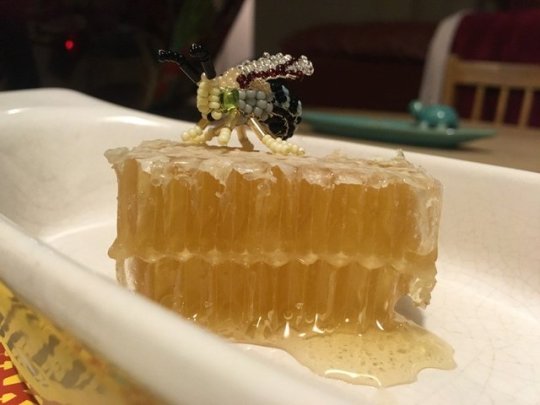
Amegilla cingulata also known as the blue-banded bee. My tiniest creation, only a little larger than a quarter!
#Amegilla cingulata#blue-banded bee#bee#honeycomb#beadwork#i swear i didn't buy honeycomb just for a photo shoot#(yes i did)#available
121 notes
·
View notes
Text

She is now an Amegilla cingulata (a species of blue banded bees)
I also made her wingless like Cot
Fun Fact: She and Periwinkle are "sisters".
22 notes
·
View notes
Photo
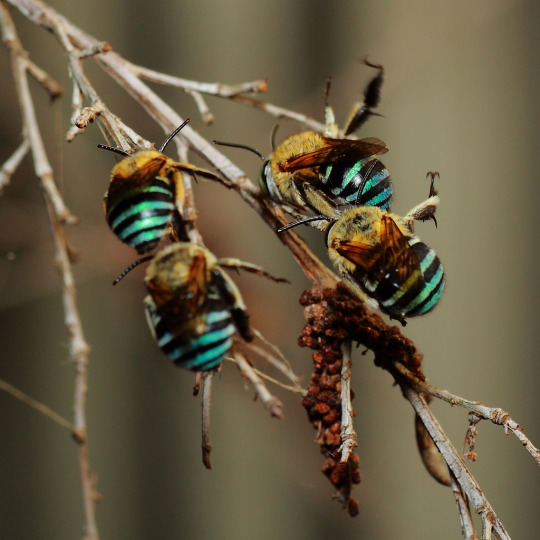
Native-Australian-blue-banded-bees-Amegilla-cingulata
41 notes
·
View notes
Photo

Blue-banded Bee (Amegilla cingulata) #bees #insects #wildlife #nature #garden #macro #australianinsects #australianwildlife #beephotography #insectphotography #wildlifephotography #naturephotography #gardenphotography #macrophotography #charming_nature #flowersandmacro #discovermitchell #abcmygarden #macrogrammers #topmacros #top_macro #_pax_ #australia_shotz #ausgeo #VicOurNature #ip_insects #ig_aussiepix #ig_discover_australia (at Broadford, Victoria) https://www.instagram.com/p/CkZ2xkrvTxY/?igshid=NGJjMDIxMWI=
#bees#insects#wildlife#nature#garden#macro#australianinsects#australianwildlife#beephotography#insectphotography#wildlifephotography#naturephotography#gardenphotography#macrophotography#charming_nature#flowersandmacro#discovermitchell#abcmygarden#macrogrammers#topmacros#top_macro#_pax_#australia_shotz#ausgeo#vicournature#ip_insects#ig_aussiepix#ig_discover_australia
2 notes
·
View notes
Photo
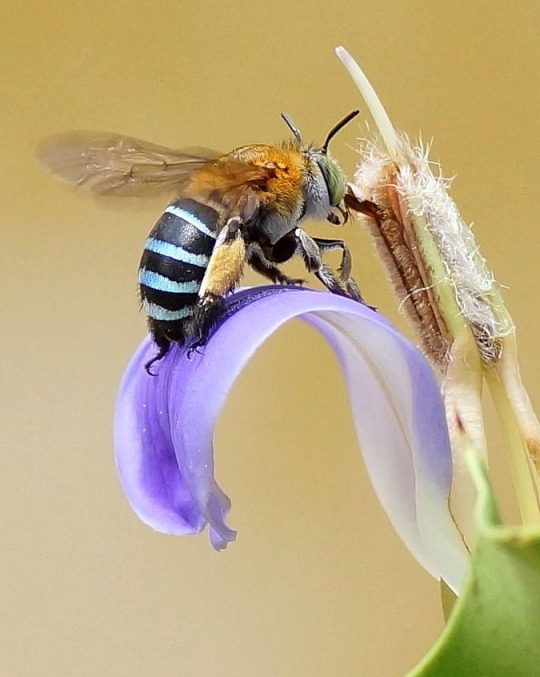
Blue banded Bee (Amegilla cingulata), Southern India
photograph by Vengolis | Wikipedia CC
30 notes
·
View notes